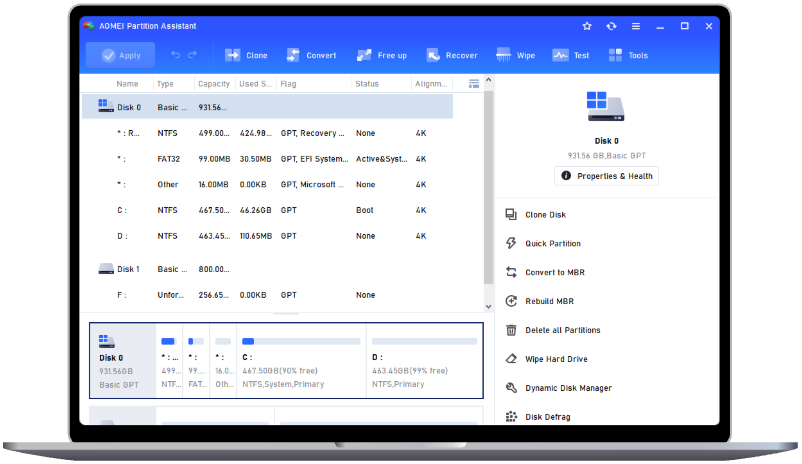Windows 11 Is Not Changing for Change
In the post-epidemic era, the new designs and functions of Windows 11 make computers closer to people's lives, and the more perceptual system design also allows people to better access new technologies.
After a lapse of 7 years, Microsoft released a new generation of operating system Windows 11 in July this year, and began to push updates on October 5th. Compared to Windows 10, the new operating system has a more rounded design, a centered start menu, and new features such as widgets. Among them, the most obvious new design style for users has also been widely discussed after the release of Windows 11.
Phoenix.com was also invited to interview Christina Koehn, the chief creative director of Microsoft Windows, to understand the source of inspiration for the design of Windows 11 and the thinking behind the design.
Design a more approachable operating system
Since the first Windows operating system launched in 1985, Microsoft has accumulated more than 1 billion Windows users. Faced with such a large user group, Koehn said that all Windows versions are based on customer feedback, and the design of Windows 11 is based on the user's technical needs that Microsoft has heard. On this basis, Koehn further explained the ideas behind the five basic design principles of Windows 11 to Phoenix.com.
Effortless (Effortless) is the first principle of Windows design. Koehn mentioned in the interview that the feedback they received included that it was difficult for users to find something when using Windows 10. "Make everyone feel that it is easy to use, and it has become a principle that we really need to realize," Koehn said. Because of this, Microsoft hopes to introduce new technologies in Windows 11 to allow users to more easily access their files during use.
In Windows 11, the system's prompt sound has become softer than before. This is a manifestation of the second design principle of "Calm" (Calm) in Windows. Koehn said that when a technology first appeared, it often made people feel helpless. Therefore, Microsoft took calm as one of the principles of design, avoiding pressure or frustration, so as to "bring everyone together." A sense of peace and happiness".
Koehn said to Phoenix.com: "We have more than 1 billion users. When you have so many users using your product, we need to really listen to the needs of every Windows user and design something that can meet the needs of most people. Products.” Therefore, when faced with a large number of user groups, Microsoft also listed personality (Personal) and familiarity (Familiarity) as the design principles of Windows 11.
"We are not changing to change something," Koehn said. They developed a design based on Windows 10, and then provided users with a new but familiar operating system. This time Windows 11 maintains a similar desktop layout to center the Start menu and introduces an editable control center, which reflects Microsoft's consideration of the two factors of personality and familiarity.
Koehn shared that the fifth principle "Coherent" (Coherent) ensures that Windows 11 maintains design coordination from the operating system to applications. The previously mentioned sound design also maintains design consistency in the auditory experience. Based on these five principles, Microsoft was able to introduce a gentler system design on Windows 11 than before.
From functional to perceptual
After experiencing the global epidemic, whether it is online office or video call, people began to rely more on digital products. Microsoft also realized this and deliberately changed Windows from a functional to a more emotional direction. Koehn said that he took this into consideration when designing Windows 11’s iconic blue flower wallpaper. Koehn said that in Microsoft's view, flowers represent growth, progress and energy, while blue represents peace. Microsoft hopes that Windows 11 will gather people and things that users love like this blue flower.
Koehn also revealed that the centered design of the start menu is to maintain the overall consistency of the system, so that the wallpaper and UI can be better unified. In order to take care of different user experiences, Microsoft has also added different colors and themes to the system, so that the wallpaper design is concentrated on the central flower.
In addition to the wallpaper, one of the most obvious changes in Windows 11 this time is that the overall system has become more rounded, and the addition of a large number of rounded corners visually makes Windows 11 softer. In addition to more rounded icons, windows and other elements, Microsoft has also redesigned other aspects. "We started to soften the corners of the system's icons and other elements. How can we make the fonts softer?" Koehn said that Microsoft added feedback on legibility collected in the past ten years to the system to help Font design. Coupled with the coordination of animation and system sound effects, we finally got the current "more emotional" system.
When asked about the source of inspiration for the design of small components, Koehn said that after experiencing the epidemic, people no longer go to the office as often as before, but spend more time at home. People need a place to quickly know their schedule. , To-do items and what's happening outside. Compared with the previous need to open different software and web pages to obtain the corresponding content, Phoenixnet Technology believes that the emergence of small components well integrates the display of different information, which also reflects Microsoft's demand for information acquisition in the post-epidemic era. Consider.
User-centric design
Throughout the interview process, Phoenixnet Technology noticed that Koehn repeatedly mentioned the role of user feedback in the design.
When asked how the team got the design inspiration for Windows 11, Koehn said that there are two main sources, one is Microsoft's huge user group, and the other is Microsoft's internal communication. In the process of designing the entire system, through Microsoft's own survey, Inside Program plan and other methods to obtain user feedback on the system, understand the user's needs, and then adjust the design. In the design of Windows 11, Koehn also mentioned cross-departmental communication with Office, Xbox, and hardware design, and understood the needs of users through communication with different departments.
When designing in the face of more than 1 billion users, Koehn said that they could not meet the requirements of everyone, but designed for a certain type of people such as teachers and gamers, so that everyone can have the required functions, rather than excessive pursuit. Meet the needs of everyone.
Previously, Microsoft Chief Product Officer Panos Panay mentioned in an interview with the media: "The core of design is people-oriented, so that users can fully invest in it, so as to get a good user experience." In this interview, Koehn has also been emphasizing users. The importance of feedback in Windows 11: Whether you are looking for design ideas in the first place or implementing design principles during the design process, user feedback is the starting point for Microsoft's design.
In the past nearly two years of the epidemic, people's lives have undergone considerable changes. Computers that are closely related to work have also occupied people's life for longer. Computers have begun to need to be more personal from a practical job. Compared with the tough lines in the previous Windows 10, the softer corners of Windows 11 also weaken the coldness of the operating system as a tool visually, reducing people's face. In the post-epidemic era, the new designs and functions of Windows 11 make computers closer to people's lives, and the more perceptual system design also allows people to better access new technologies.

